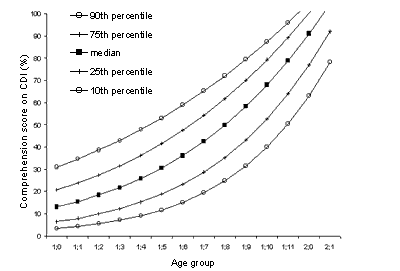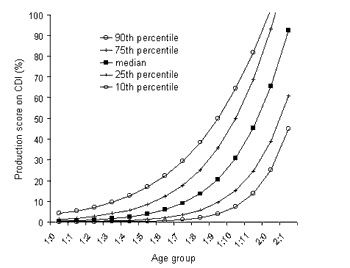.

ALL - all
Sign - Palm outward over opposite shoulder sweep across the chest and all the way around and back to the holding position palm in.
Hint - Scooping all the world and holding it to ones self in ones hand.
. Sign - Hand flat palm-down held steadily against eyebrows while looking at the object.
Hint - Eyes staring off to distance with eyes shaded to see better.
. Sign - The arm is extended to the side and the hand spread vertically then swinging sharply across to the other side.
Hint - Hitting or throwing a ball.
. Sign - Closed fist held out and waved back and forth and tapped at the bladder.
Hint - This is like the HEY HEY pay attention to me sign but tapped to the bladder.
. Sign - Move the cupped palm down hand left to right, back and forth a few times.
Hint - The hand is doing something like pushing a toy car.
. Sign - Same as the YES sign except that it is completed with a closed gripping hand.
Hint - The good yes-material is brought to ones self and gripped in this near to one's self position.
. Sign - The same as the NO sign except that it is completed with a closed gripping hand.
Hint - The bad-material is pushed away from self and held in that position.
. Sign - Open palm held vertically facing out with the arm about half way extended and bring the palm toward the chin a like a YES sign and then back out toward a NO sign two times.
Hint - Moving half way to the NO then back to the half way to YES position, two times. The concept maybe is like bouncing half way from yes to no and back again.
. Sign - Palm pointing up stroking chest upward maintaining close contact with the chest.
Hint - Represents a good feeling inside because the hand is still touching the chest. The GOOD sign can be done immediately afterwards as an affirmation of the goodness felt.
. Sign - Palm pointing down stroking chest downward with thumb maintaining contact with the chest.
Hint - Emotions are depressed, if the hand is cupped the emotions are very sad and if the hand is clawed one is painfully sad and angry.
. Sign - Clawed hand palm down under the chin pushed down a bit.
Hint - The generalized bad sign is the clawed hand in this case the hand is also negatively pushing virtual objects away from the self.
. Sign - Clawed hand pointing down and moved up and down sharply at chest level.
Hint - Generalized anger sign out in space.
. Sign - Clawed hand jabbing sharply in the direction of the thing causing the anger.
Hint - Attacking the nasty thing with the sign.
. Sign - Open hand held vertically with arm extended then brought to a fist at the chest.
Hint - Like the sign GIM ME but with the hand held vertically instead of palm up and closed at the completion of the sign. Grabbing someone out of thin air. This sign has the person, place or thing hand position potentials.
. Sign - Open hand held horizontally with arm extended and then brought into a fist at the chest.
Hint - Like the sign GIM ME but with the hand closed at the completion of the sign. This sign has the person, place or thing hand position potentials.
. Sign - Fist held to chest then moved sharply down and out ending up with clawed hand down and out.
Hint - The completed get sign followed by throwing down and away.
. Sign - hand palm up moved away from chest to arms length.
Hint - The opposite of GIMME sign. This is the give you something.
. Sign - Closed hand moved from thigh to the waist.
Hint - Putting pants on. This may also be used for putting diapers on.
. Sign - Raise the fist to full arm height above the WHITE position and then lift the thumb up.
Hint - Light-bulb pops ON abruptly. While you teach this sign turn the light ON with the switch. Do the sign and turn ON the light. Compare to LIGHT OFF and WHITE. While holding the LIGHT ON sign, closing the thumb into a fist position means to permantize the sign. In this case it means leave the light ON. The signs that are above their natural full color position indicates that it is a light emitter. A white light bulb is whiter than WHITE and a neon red is redder than RED.
. Sign - Raise fist to the LIGHT ON position and then lower it to the tummy height BLACK position with the thumb still extended, then lower the thumb.
Hint - The ON light-bulb moves through greys to OFF and things move into BLACK and so to OFF. OFF is in the same location as black but it is made permanent with the closing of the fist.
. Sign - Point the index finger to forehead and move down and out a bit.
Hint - This is like Pa Pa but making the male sign with a singular pointing index finger. See also SHE and THEY.
. Sign - Point the index finger to the ear lobe and stroke the jaw forward to the chin.
Hint - The female sign like Ma Ma but with a singular pointing index finger like HE.
. Sign - Point the index finger with palm to center to the bridge of the nose from below and moving forward and down a bit.
Hint - The concept of the self, as the thing in control, begins between the eyes, with the hand and the hand eye coordination manipulating external reality. See also US or we.
. Sign - Point the index finger palm to the center straight at the person being indicated and drop it a bit.
Hint - All singular pointing index fingers are pointing at the thing referred to and when it refers to a person it is palm to the center. See also THEY.
. Sign - Point the index finger and the middle finger, palm to the center, to the nose and drop it a bit.
Hint - Signs using two index fingers are referring to plural forms of a single finger reference. See also ME
. Sign - Point the index finger and the middle finger palm to the center at the center of the forehead and then point to the people.
Hint - Signs using the first two fingers are referring to plural forms. The plural of HE is they. Use the SHE to the ear lobe if the group is all females.
. Sign - Pointing the index finger palm up toward object and if the object is out of sight then give a little hop forward and up to indicate over there and out of sight
Hint - The palm position indicates whether people, place or things are being indicated. If the palm is vertical and pointing toward the center then the reference is to people like the PICK-ME-UP sign or HE. If the palm is up, it is like HOLDING some object, and the reference is to some thing like IT. If the palm is down it is like having dropped some object to ground and it is referring to some place, like an object has fallen from the hand to a place THERE .
. Sign - The palm down with the index finger pointing at the location and if the location is out of sight hopping the finger up a bit at the end of the arm extension.
Hint - .
. Sign - The palm down and pointing the index finger straight down with the arm only half extended and moving down.
Hint - A natural gesture of pointing to where one is located. See also THERE.
. Sign - Point index finger and the second finger palm to the center and stroking the location of the people referred to.
Hint - Referring to a group of people requires the group identifier which is two fingers. See the single other person which is HE.
. Sign - The open hand at chest level is then closed.
Hint - The hand takes hold of the it, person, place or thing.

SEE
- see

BALL
- ball

PEE PEE
- pee pee

DO
- do

RIGHT.
- right

WRONG
- wrong

MAYBE
- maybe

HAPPY
- happy

SAD
- sad

BAD
- bad

ANGRY
- angry

MAD AT
- mad at

GET
- get

MINE
- mine

THROW OUT
- throw out

GIVE YOU
- give you

PANTS
- pants

LIGHT ON
- light on

LIGHT OFF
- light off

HE
- he

SHE
- she

ME
- me

YOU
- you

US
- us

THEY
- they

IT
- it

THERE
- there

HERE
- here

THEY
- they

HOLD
- hold
 Word Comprehension for speaking children averages about: 12 at 1 year, 50 at 1-1/2 years and 90 at 2 years.
Word Comprehension for speaking children averages about: 12 at 1 year, 50 at 1-1/2 years and 90 at 2 years. Word Production for speaking children averages about: 1 at one year and, 4 at 1-1/2 years and 65 at 2 years.
Word Production for speaking children averages about: 1 at one year and, 4 at 1-1/2 years and 65 at 2 years.